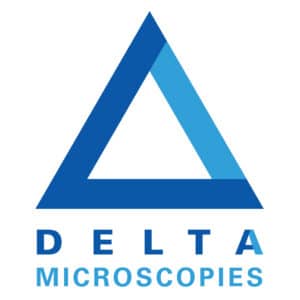The recent discovery of 17 people who have inherited maternal and paternal lines of mitochondrial DNA has major ramifications for medical and ancestry research.
Dec 12, 2018 JOHN D. LOIKE
John D. Loike, a Professor of Biology at Touro College and University Systems, writes a regular column on bioethics for The Scientist.
Until last month, it was generally believed that mitochondria and their DNA are exclusively maternally inherited in humans. In a provocative report in PNAS, scientists identified 17 people from three unrelated families with a high level of mitochondrial DNA (mtDNA) inherited from both mothers and male ancestors. Now, it’s time to rethink the dogma of mitochondrial inheritance.
Earlier human studies using human polyploid embryos generated by IVF only detected paternal mtDNA up until the eight-cell stage of development. There was, however, one report in 2002 of a single male with mitochondrial myopathy, a condition affecting muscles, who expressed both maternal and paternal mtDNA. This observation is surprising to see in humans, even though many species (including algae, plants, yeast, and Drosophila) exhibit strict paternal mtDNA inheritance.
The scientific, medical, and ethical ramifications of this discovery require more scientific data. First, we do not understand the exact mechanism by which the paternal mtDNA escapes elimination by the fertilized oocyte. The second question is, does paternal mtDNA transmission result from a sporadic mutation in mtDNA processing or is it part of a normal mitochondrial processing pathway? Finally, how common is paternal transmission of mtDNA?
See “Fathers Can Pass Mitochondrial DNA to Children”
The answers to these questions will affect past and future medical studies. There have been many studies that examine genetic origins from the maternal parent. One study from 2017, for example, established a genetic link between autism and particular mitochondrial haplotypes. Children with certain European haplogroups (for example, I, J, K, O-X, T, and U) were all at significantly higher risk for autism spectrum disorders as were Asian and Native American haplogroup A and macrohaplogroup M. How does paternal mtDNA influence the accuracy of these studies? In addition, how might heteroplasmy, where a cell’s mitochondria do not have the same genomic DNA, have any negative effects on the health of an embryo, especially when considering the engagement of mitochondrial replacement therapy? Finally, identifying why paternal mtDNA survives fertilization in these families, when typically it gets destroyed shortly after, may even lead to the development of a new therapeutic treatment for women who express pathogenic mtDNA.
If a significant number of humans possesses both maternal and paternal mtDNA, it would require a re-assessment of using mtDNA to establish biological ancestry.
From a historical perspective, paternal mtDNA transmission may lead to a reinterpretation of two classic, but controversial, reports regarding “mitochondrial Eve”—the maternal ancestor of all living humans. In 1987, scientists reported the results of a worldwide survey of human mtDNA that showed “all mitochondrial DNAs stem from one woman” and that she probably lived around 200,000 years ago in Africa. A 2010 study was more robust in using mitochondrial genomes to gauge relatedness to confirm that the mother of all human beings, Eve, lived 200,000 years ago. If paternal transmission is not infrequent, then these studies must be reexamined.
From an ethical perspective, the question of how common paternal mtDNA transmission occurs is especially important. The ethical complexity of establishing parenthood might be particularly relevant in Israel. In the past year, allegedly maternally transmitted mitochondrial genetic markers, K1a1b1a, K1a9, K2a2a, and N1b, were shown to be common among Ashkenazi Jews but rarely seen in anyone else. Since Jewishness is only maternally transmitted, possessing one of these genetic markers was viewed by many Israeli rabbinical experts as a reliable legal and religious indicator of Jewish ancestry. However, if paternal mtDNA is not a rare inherited event, then it will require a complete re-analysis by these rabbinical experts whether these mtDNA genetic markers are, in fact, a valid religious indicator of Jewishness.
Moreover, if a significant number of humans possesses both maternal and paternal mtDNA, it would require a re-assessment of using mtDNA to establish biological ancestry. In particular, some commercial DNA tests specifically examine mtDNA that is allegedly passed down from mother to child to determine maternal lineage and regions of origin. If in fact the mtDNA can be from a paternal line at some point, the maternal ancestry determination would be inaccurate.
We live in an age where new biotechnologies can reformat scientific dogma. For example, the central DNA dogma states that DNA is transcribed into mRNA and translated into proteins. However, the discovery of reverse transcriptase in retroviruses required a modification to this basic tenet of biology because this enzyme can transcribe RNA into DNA. While many such discoveries do not have ethical ramifications, this recent discovery of paternal mtDNA transmission may have profound scientific, ethical, and religious ramifications that will be debated for years to come


